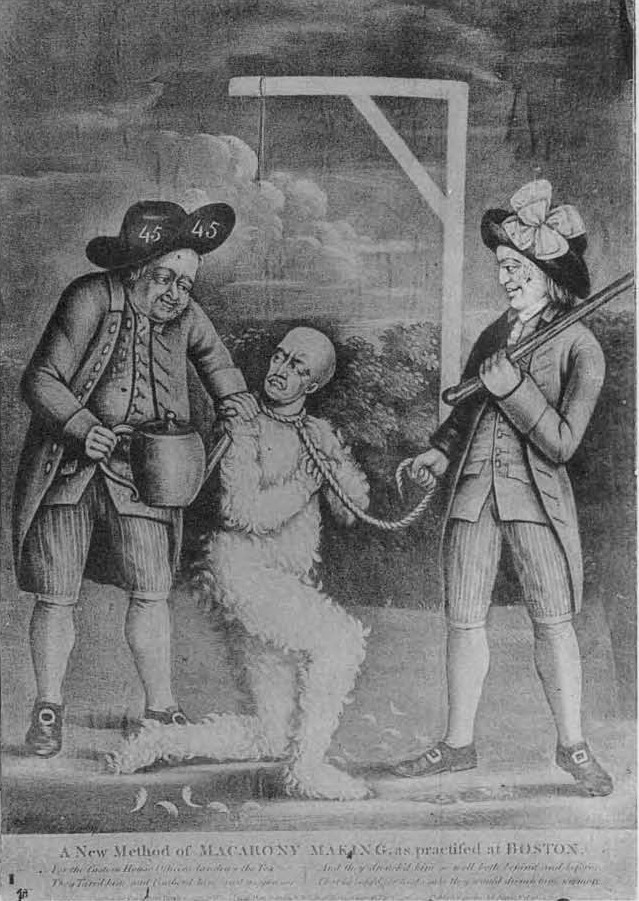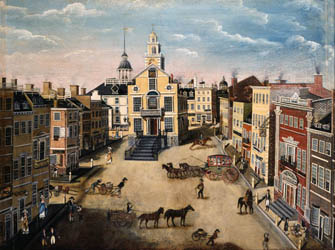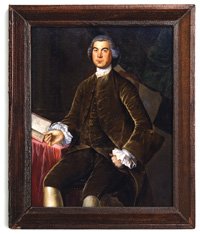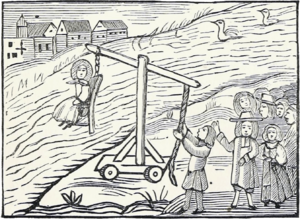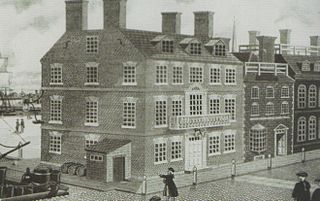“Carting the feather’d Informer thro’ the principal Streets in Town”
Though Boston became notorious in the British Empire for tar-and-feathers attacks in the 1770s, the town adopted that form of public punishment late. The first documented example took place in Norfolk, Virginia, in 1766.
A couple of years later, crowds used tar and feathers three times in Salem and once in Newburyport. (With typical Massachusetts chauvinism, Judge Peter Oliver later wrote that the ritual was invented in Salem.) In his 2003 article for the New England Quarterly, Ben Irvin then listed incidents in New Haven, New York, and Philadelphia.
In all those attacks, the victims were men who worked at a low level for the Customs service or were thought to have given Customs officers information about smuggling. Several were identified simply as “informers.” The attackers were usually sailors and waterfront workers directly affected by Customs seizures. The 16 Oct 1769 Boston Gazette and Boston Evening-Post reprinted a favorable report on the New York attack. (Irvin lists two attacks in that city, based on reports with differing details, but an item in the 5 Oct 1769 New-York Journal shows they were the same event.)
Many histories of pre-Revolutionary Boston depict the tar-and-feathers attack as an outgrowth of the uproar over Mein. Indeed, witnesses of the time had to sort them out. Province secretary Andrew Oliver wrote on 11 November:
Just before Sunset I heard that Mr. Mein had fired a pistol upon some people in the street & had betaken himself to the Main guard for protection. Soon after this there was a great noise of halloing & huzzaing by people who I could easily perceive shifted their Stations, by the Noise coming from different quarters successively: upon which I concluded that the populace had got Mr. Mein & were carrying him about the Town in an abusive manner; but I was afterwards told that it was an informer whom they were serving in this manner. It was thought a lucky incident for Mr. Mein that his Man fell in their way, as it diverted the Attention of the People from Mr. Mein.However, the Boston Gazette’s sympathetic report on the tarring and feathering says that during the day, before the merchants confronted John Mein, people were already preparing to attack sailor George Gailer. The crowd may have grown larger and more worked up because of the excitement over Mein, but it looks like the two incidents developed independently and in parallel. The upper-class merchants confronted the printer while working-class sailors lay in wait for one of their own. We historians might have been tempted by the longer paper trail and political roots of the Mein attack to treat the other event as subordinate.
Here’s the Boston Gazette report from 30 Oct 1769, which also appeared in the Boston Evening-Post:
Saturday Afternoon, a Person who lately belonged to the Sloop Liberty, and came round to this Place in the Sloop Success from Rhode Island, and soon after his Arrival informed of her having a Cask or two of Wine on board, which occasioned the Vessel’s being seiz’d, was discovered and pursued, but took Shelter in a House where he secreted himself till the beginning of the Evening, when thinking the Coast clear he ventured out, but, the Avenues to the House being strictly watched the whole of the Time, he was immediately seized upon by the Populace, and soon placed in a Cart, his Jacket and Shirt taken off, and his naked Skin well tarr’d and feather’d; they oblig’d him to hold a large Glass Lanthorn in his Hand that People might see the doleful Condition he was in, and deter others from such infamous Practices:—A few more observations about this article. First, historians often report Gailer’s service on the Customs sloop Liberty, which would make this yet another Liberty riot tied to North America’s resistance to the Townshend duties. It looks like his more recent informing about the “Cask or two of Wine” (the same issue as in the New York attack) was the bigger reason.
He was then carted from the Town-House thro’ the main Street up to Liberty Tree, amidst a vast Concourse of People, where he was made to swear never to be guilty of the like Crime for the future; but in their going thither, as they pass’d Mein and Fleming’s Printing-Office a Gun was fired from thence and two others snap’d at them just as they got by, upon which some of the Company rushed into the Office in order to secure the Offenders, but they had fled; however they bro’t off three Guns, two of them well charg’d, as Evidence against them whenever they can be taken:—
This imprudent Conduct of those in the Printing Office (for what Reason we know not, as no injury seemed designed them) did not interrupt the Carting the feather’d Informer thro’ the principal Streets in Town for about three Hours, when they bro’t him back to Kingstreet, and after renewing his Obligation of behaving better for time to come, and asking Pardon for his past Offence, he was dismissed without further Damage, after having his Cloaths returned him again, and then all peaceably dispersed about Nine o’Clock.
Second, in a letter Mein complained that after threatening him the Boston crowd “attacked the House & Printing Office, broke open the great Gate, & our other Doors, and our Ware room.” Was he referring to the same forcible search this article described? If so, that’s another example of an event pegged to Mein that had at least a mix of motives. The crowd didn’t go the print shop immediately after the confrontation on King Street. They went by during their procession that night, perhaps even making a special stop to jeer the people inside. Gunfire from inside prompted people to break in and seize weapons.
TOMORROW: More on the shots from the printing office.

